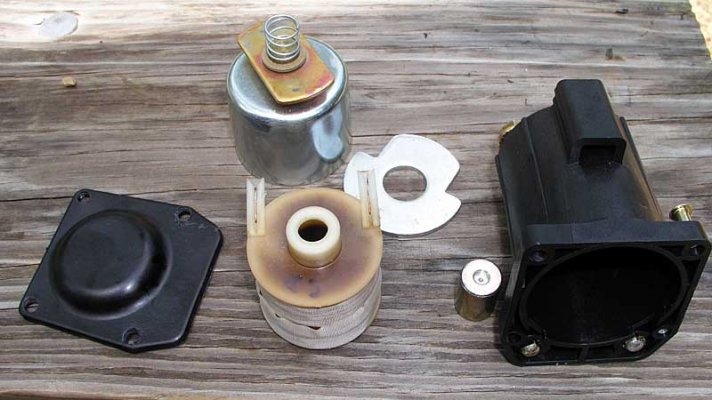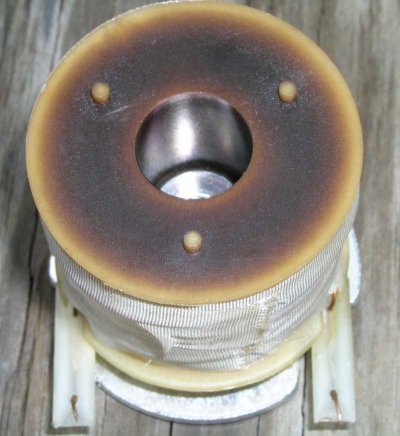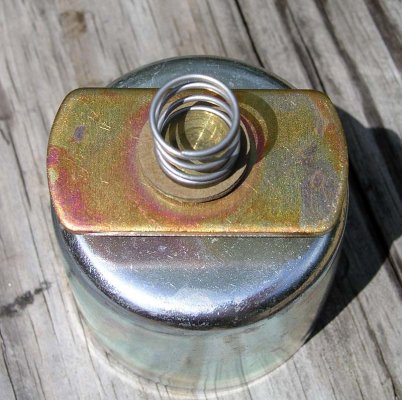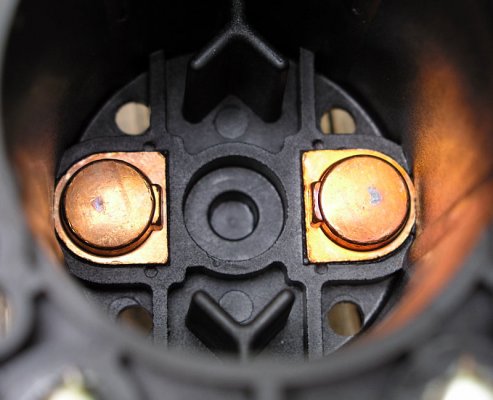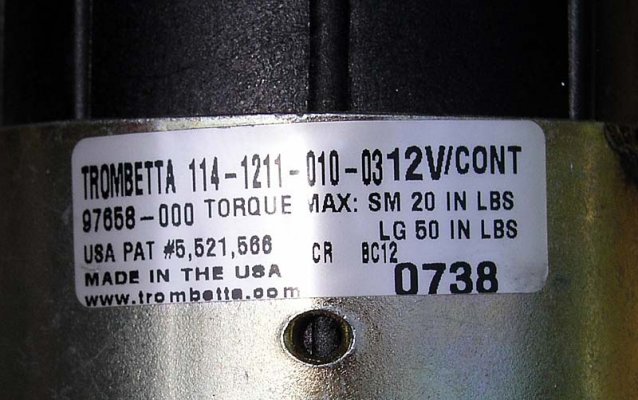John Canfield
Site Team
This morning I replaced the Trombetta solenoid with the Blue Sea #9112. I was able to disassemble the Trombetta quite easily and unfortunately I do not see a 'smoking gun.' The Trombetta contacts were in excellent condition, so there was no issue with a crust build-up on them. The coil resistance measures 8.1 ohms with my Fluke digital multimeter which means the coil is drawing a continuous 1.68 amps at 13.6 volts applied. In comparison, the Blue Sea #9112 nominal hold current is 110 ma (0.11 amps).
The Trombetta coil was obviously showing the effects of being quite hot due to discoloration on the coil form.
You can look at the pictures and draw your own conclusion. I don't have one at this point.
The Trombetta coil was obviously showing the effects of being quite hot due to discoloration on the coil form.
You can look at the pictures and draw your own conclusion. I don't have one at this point.

